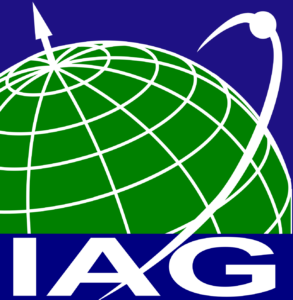JSG T.40 Modelling the gravity field of irregularly shaped celestial bodies
Chair: Zhi Yin (China)
Affiliations: Commissions 1,2, IGFS
Terms of Reference
Deep space exploration missions such as the past (e.g., ROSETTA and Hayabusa), present (e.g. OSIRIS-REx) and planned missions (e.g., HERA, Psyche, MMX, and Chang’e-2) will significantly change the way how we understand and utilize the solar system. In deep space exploration activities, the modelling of the targeted extraterrestrial bodies’ gravity fields is an important work. However, unlike the sphere-like Earth, small solar system bodies like asteroids and comets are usually irregularly shaped in geometry, making the so-called complex-boundary value problems (CBVPs) of them more challenging than the geodetic boundary value problem (GBVP) of the Earth. For instance, the divergence problem of the spherical harmonic expansion in the CBVP is more complicated than that in the GBVP. To some extent, the small solar system bodies’ CBVPs can be treated as extreme cases of the Earth’s GBVP, and theories and methods for solving the CBVP can be applied to the GBVP in a downwardly compatible way.
One aim of this JSG is to investigate, develop and verify new theories and methods on solving the irregularly shaped celestial bodies’ CBVPs. It mainly focuses 8 on the potential flow theory regarding a gravitational vector field as an equivalent potential-flow velocity field. In this way, the gravitational vector field is mapped onto a potential-flow velocity field, and the CBVP is able to be made amenable to off-theshelf computational fluid dynamics (CFD) techniques. The other aim of this JSG is to investigate fast-computing integration techniques for modelling irregularly shaped celestial bodies’ gravity fields in either spatial or frequency domain. It is an extension of the fast integration algorithms for the Earth’s gravity field, allowing efficient assessments on the asteroids’ or comets’ gravity field solutions derived from the potential flow theory.
This JSG is open to the investigation on the highly nonlinear structure of an irregularly shaped celestial body’s gravity field, in terms of equipotential surfaces, plumb lines or gravity tensors. It is also open to the research of irregularly shaped celestial bodies’ surface environment simulations based on their gravity field models, such as the deep-space data processing, the gravity field visualization, the height system definition, the geophysical analysis, etc.
Objectives
• Develop and study new CBVP-solving theories and methods for modelling irregularly shaped celestial bodies’ gravity fields.
• Investigate the innovative gravity field modelling approaches based on the potential flow theory and the numerical computation techniques.
• Develop fast-computing algorithms as well as parallel computation techniques for integrating an irregularly shaped celestial body’s gravity field, in either space or frequency domain.
• Compare systematically the gravity fields calculated by CFD techniques and harmonic series expansions inside Brillouin surfaces.
• Investigate the highly nonlinear structure of an irregularly shaped celestial body’s gravity field, via equipotential surfaces, plumb lines or high-order gravity tensors, by using the above new gravity field modelling theories and methods.
• Investigate the interior structure like the density distribution of an irregularly shaped celestial body by analyzing its exterior gravity field model.
• Develop a web-based or stand-alone software for visualizing and analyzing an irregularly shaped celestial body’s gravity field, based on the Geographic Information System (GIS) technology.
Program of Activities
• Presenting findings at international geodetic conferences, meetings and workshops.
• Organizing working meetings at international symposia.
• Organizing sessions at international meetings and workshops (EGU, AGU, IAG, Hotine-Marussi Symposium, etc.) as needed.
• Releasing a webpage or a stand-alone software for cataloguing, visualizing and analyzing the irregularly shaped celestial body’s gravity field.
Members
Zhi Yin (China), chair
Michal Šprlák (Czech Republic)
Biao Lu (Denmark)
Zuzana Minarechov. (Slovakia)
Marek Macák (Slovakia)
Xiaole Deng (Germany)
Junsheng Liu (China)
Georgia Gavriilidou (Greece)
Yabo Duan (China)
Leyuan Wu (United Kingdom)
Blažej Bucha (Slovakia)
Qinglu Mu (China)
Dimitrios Tsoulis (Greece)
Kefei Zhang (China)
Nico Sneeuw (Germany)



